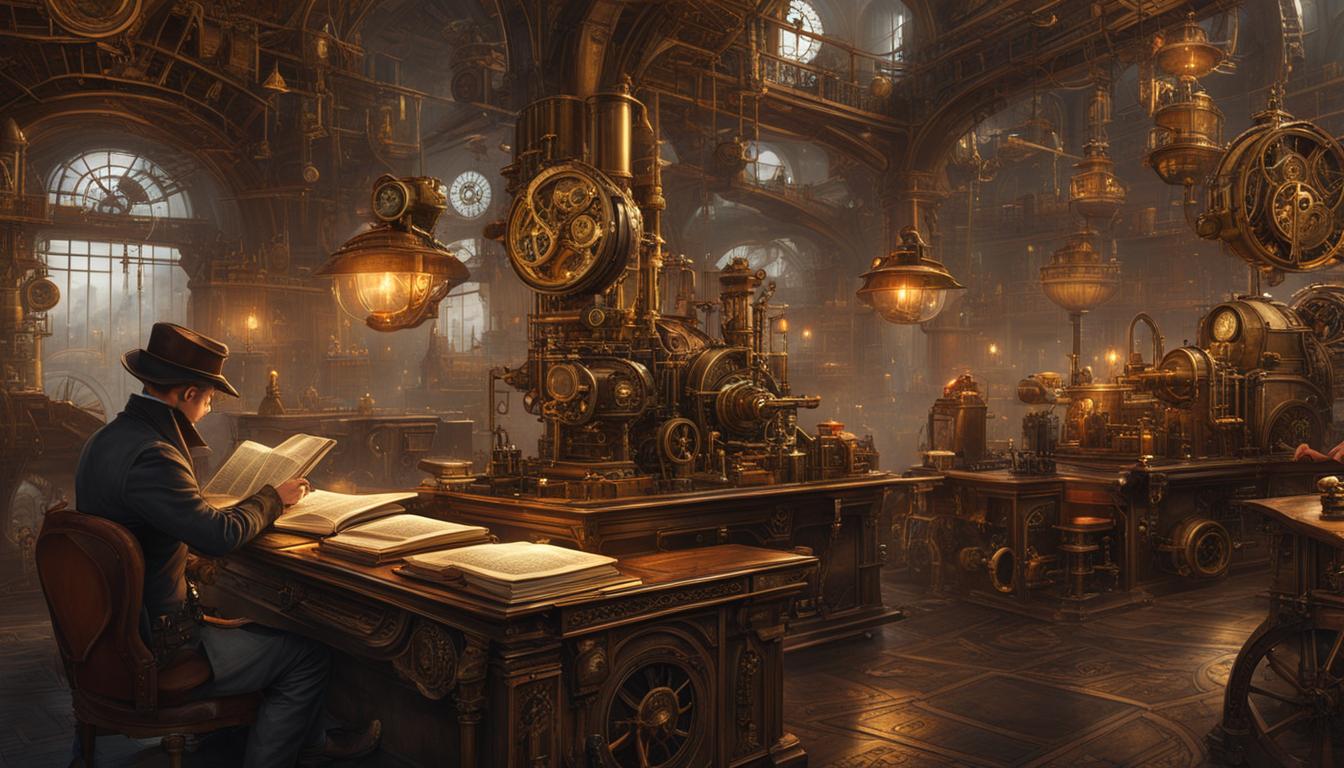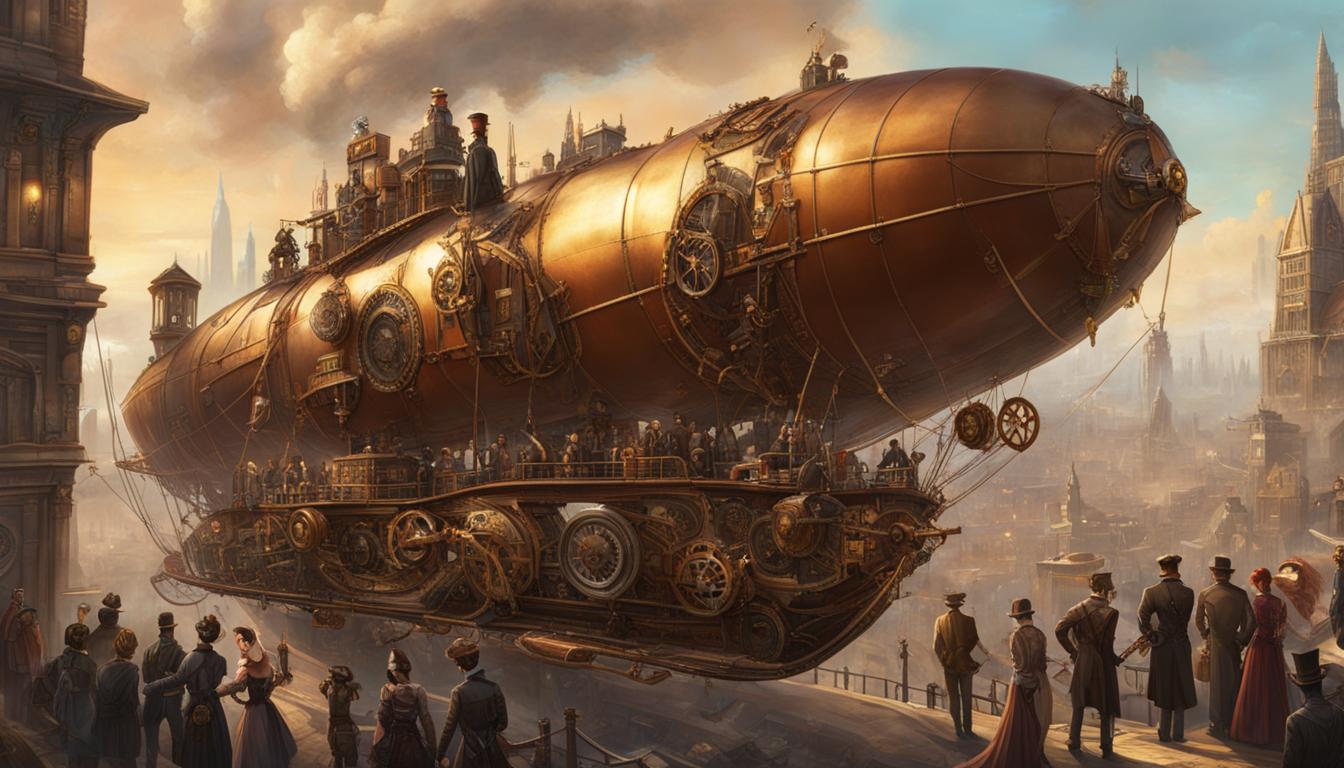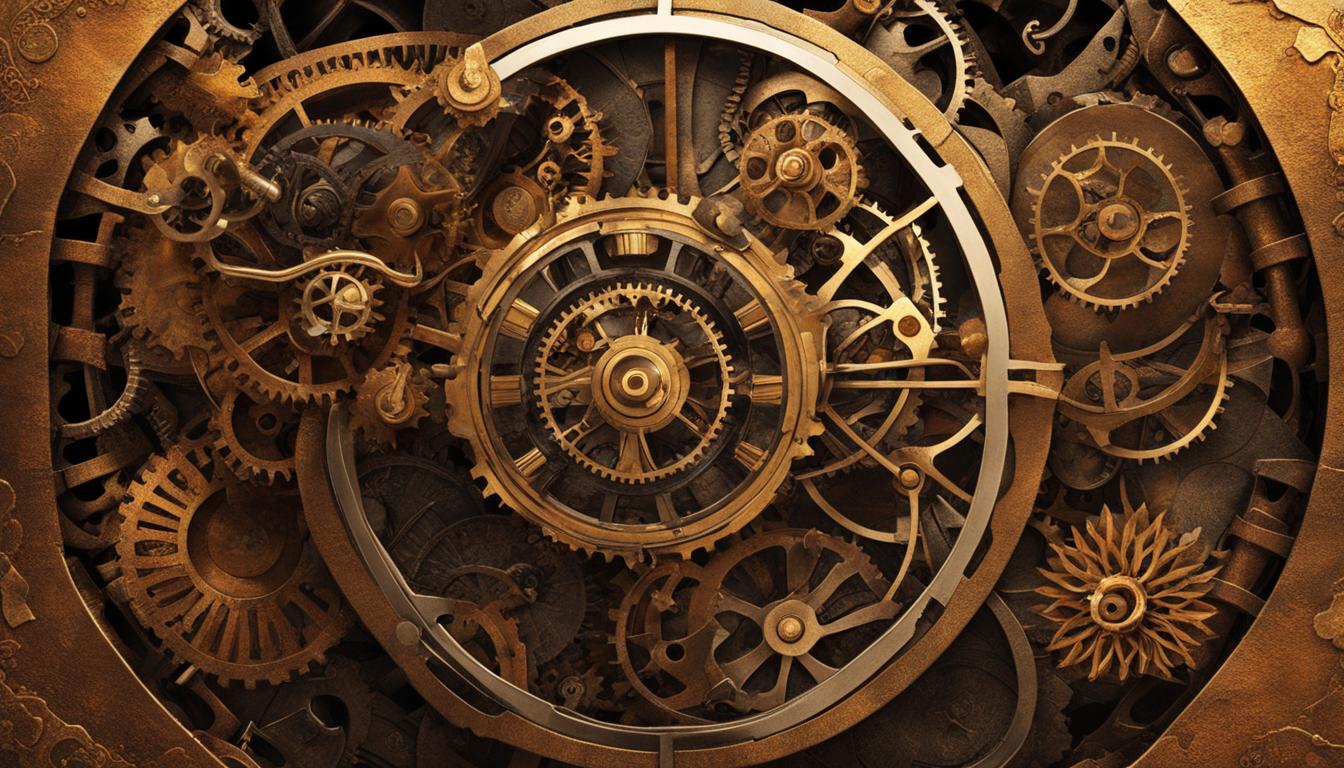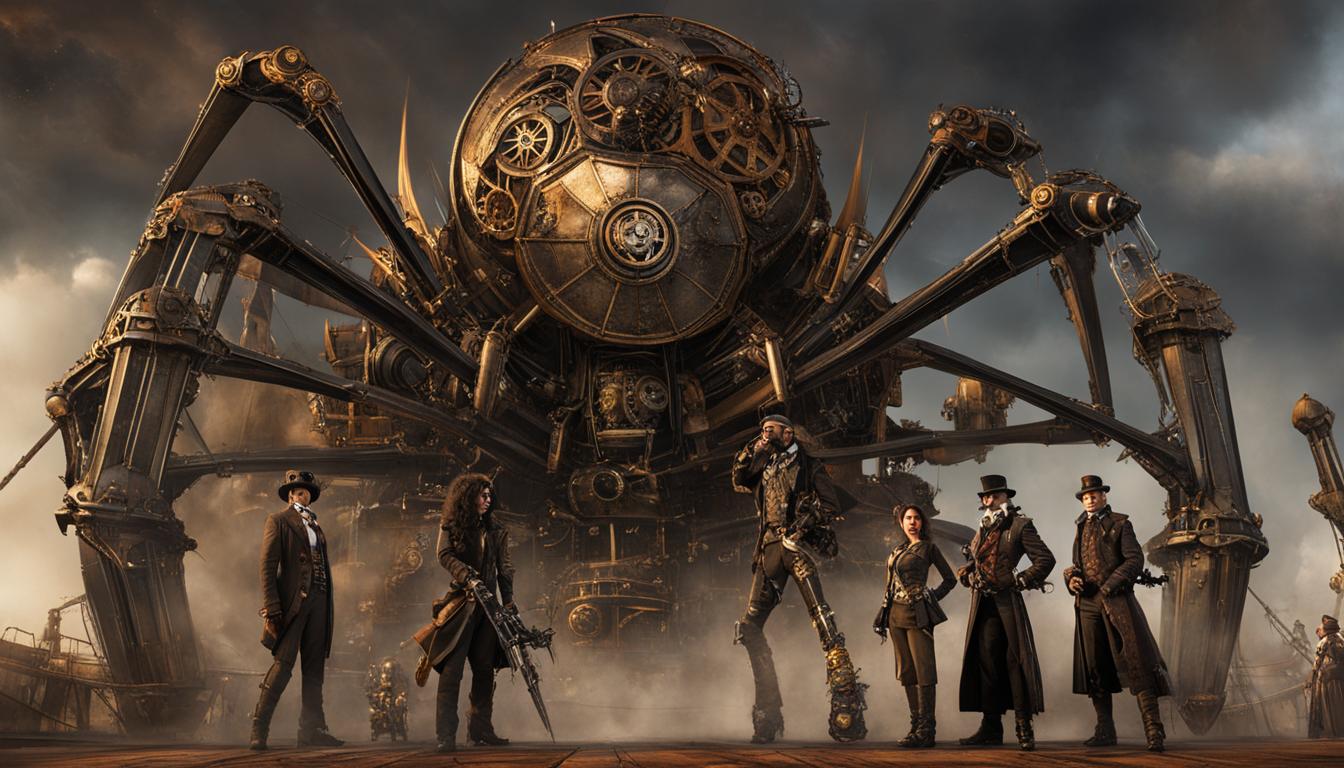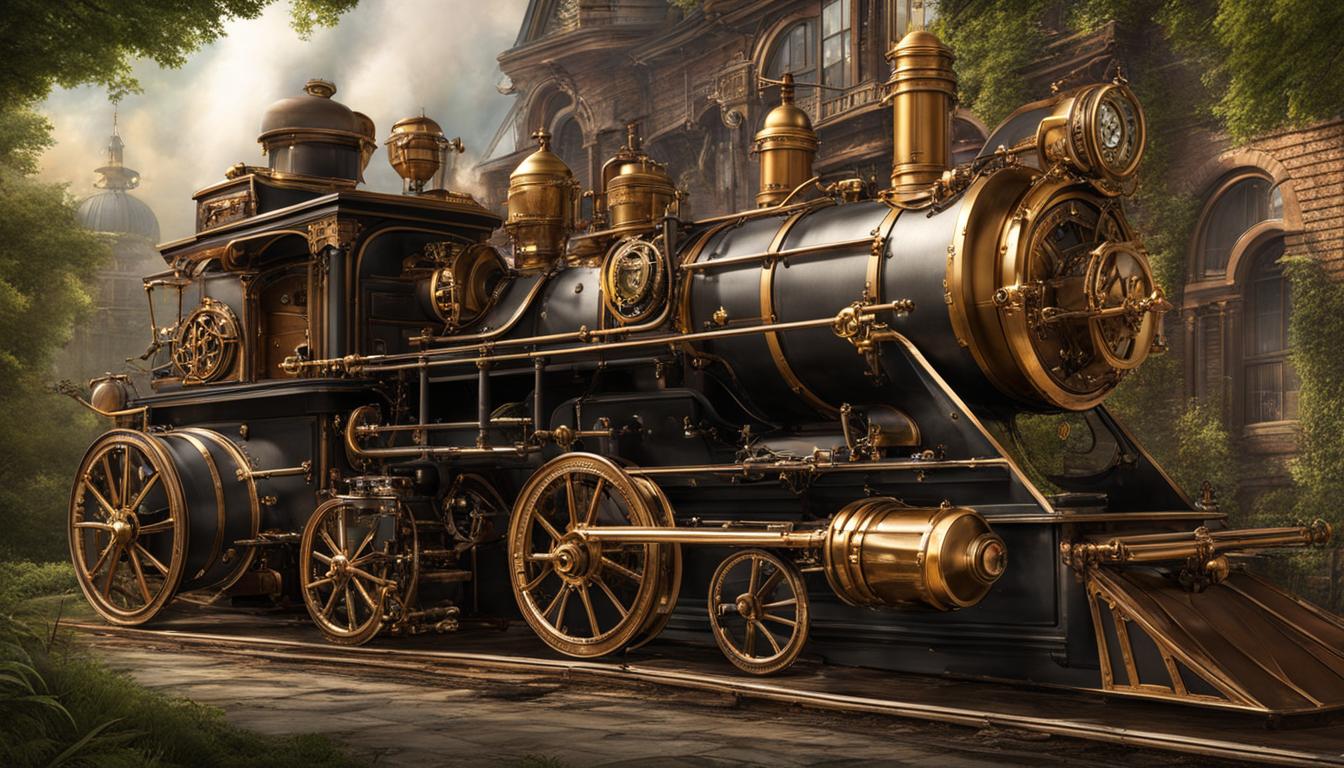Steampunk, a captivating subgenre of science fiction, takes inspiration from the elegant Victorian era and infuses it with futuristic ideas. It seamlessly blends historical elements with alternative narratives, breathing new life into the past. Steampunk has become a prominent force in art, fashion, and film, captivating audiences with its unique aesthetic that merges the old and the new.
But what lies at the core of steampunk philosophy? What are its beliefs and worldview? Let’s delve deep into the fascinating world of steampunk and unravel its mysteries together.
Key Takeaways:
- Steampunk is a subgenre of science fiction that combines the Victorian era with futuristic ideas.
- It is characterized by the fusion of historical elements and alternative historical narratives.
- Steampunk explores themes of rebellion, innovation, and social reform.
- Notable works in the steampunk genre include “The Difference Engine” and “Mortal Engines”.
- Research and worldbuilding are essential to crafting an authentic steampunk story.
The Historical Context of Steampunk
The Victorian era, named after Queen Victoria’s reign in the United Kingdom from 1837 to 1901, was a time of significant societal and technological changes. The Industrial Revolution and the advent of steam-powered machinery transformed the world. Steampunk authors often draw on these historical elements, reimagining them in a world where steam technology has led to advanced and fantastical inventions. The Victorian era’s social hierarchies, moral codes, and scientific fascination form the backdrop for many Steampunk narratives.
Victorian Era: A Time of Transformation
The Victorian era is characterized by its distinct social and cultural landscape. It was a time of immense progress and contrast, with an industrial boom accompanied by social inequality and rigid codes of conduct. The technological advancements of the Industrial Revolution brought forth new possibilities for steam-powered technology, inspiring the imaginations of Steampunk creators. They explore the alternative historical narratives that could have emerged if steam-powered machinery had evolved even further.
Alternative Historical Narratives in Steampunk
Steampunk narratives often diverge from the historical timeline, presenting a world where steam-powered technology plays a central role in society. Drawing inspiration from the Victorian era, these stories create alternative realities that blend elements of the past and the future. By envisioning a different course of history, Steampunk authors open up a world of possibilities, where steam-powered airships soar through the skies and intricate clockwork devices bring innovation and wonder.
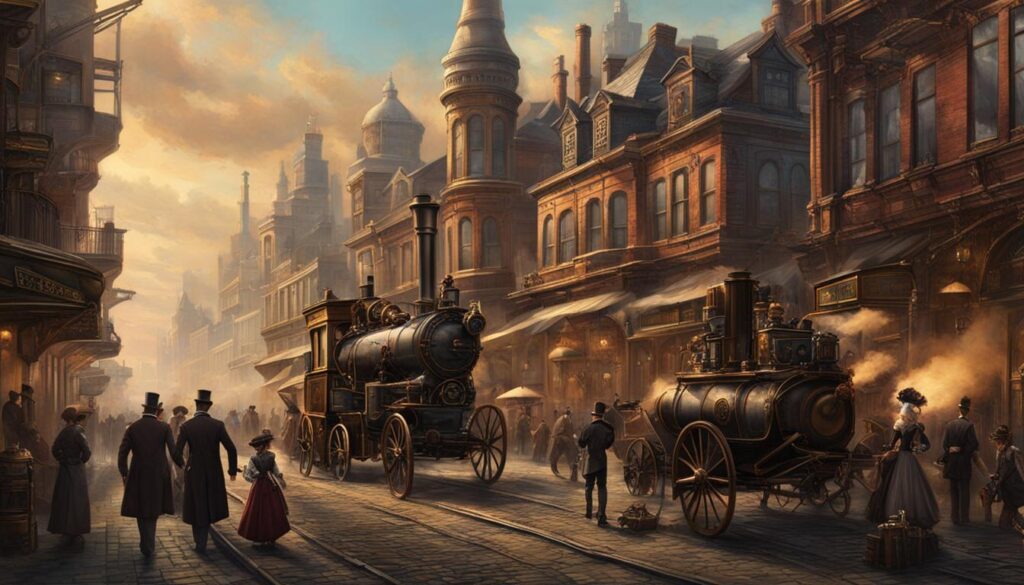
Immersing oneself in the historical context of the Victorian era is essential for understanding the origins and themes of Steampunk. It allows readers to appreciate the intricate worldbuilding and the intricate blend of history and imagination that defines the genre. By embracing the past and reimagining it through the lens of steam-powered technology, Steampunk offers a unique and captivating reading experience.
Key Themes in Steampunk Philosophy
Steampunk, as a subgenre, delves into various key themes that define its unique philosophy and ethos. At the core of steampunk is the spirit of rebellion, where characters challenge conventional norms, defy authorities, and fight against oppressive regimes. This theme of rebellion showcases a longing for individual freedom and the desire to break free from societal constraints.
Innovation is another prominent theme in steampunk philosophy. The subgenre celebrates human ingenuity and the relentless pursuit of progress through technological innovation. Steampunk narratives often push the boundaries of what is possible, imagining advanced and fantastical inventions fueled by steam-powered technology. This emphasis on innovation reflects the belief that creativity and invention can shape a better future.
Furthermore, social reform is a recurring theme in steampunk. The subgenre serves as a platform for commentary on historical and contemporary social issues. In steampunk stories, class disparities, gender roles, and worker’s rights are often explored, shedding light on the struggles faced by marginalized groups and advocating for change. The steampunk philosophy encourages readers to challenge and question societal norms and actively participate in creating a more equitable world.
| Key Themes in Steampunk Philosophy | Keywords |
|---|---|
| Rebellion | challenge, defy, oppressive regimes |
| Innovation | ingenuity, progress, technological innovation |
| Social Reform | class disparities, gender roles, worker’s rights |
“Steampunk is not merely an aesthetic or literary movement, but a call to action. It invites us to question societal norms, challenge oppressive systems, and explore the limitless potential of human ingenuity.” – Unknown
Through its exploration of rebellion, innovation, and social reform, steampunk philosophy provokes thought and encourages readers to examine the complexities of our world. It serves as a reminder that even in alternative histories or fantastical settings, the core values of humanity remain relevant and worth fighting for.
Notable Works in the Steampunk Genre
Steampunk has given rise to a plethora of remarkable works that exemplify the genre’s unique blend of history, technology, and imagination. From alternate histories to fantastical inventions, these notable works showcase the diversity and depth of the Steampunk genre.
The Difference Engine
“The Difference Engine” by William Gibson and Bruce Sterling is often hailed as one of the seminal works in Steampunk literature. Set in an alternate Victorian era, the novel explores a world where Babbage’s Analytical Engine, a mechanical computer, becomes a reality. This groundbreaking work lays the foundation for many Steampunk narratives and challenges traditional views of technology and history.
Mortal Engines
Philip Reeve’s “Mortal Engines” takes readers on a thrilling adventure in a steam-powered post-apocalyptic world. This captivating novel introduces a concept where entire cities are mounted on wheels, roaming the wastelands and devouring smaller towns for resources. With its imaginative worldbuilding and compelling characters, “Mortal Engines” has become a beloved Steampunk classic.
Boneshaker
In Cherie Priest’s “Boneshaker,” readers are transported to an alternate 19th-century Seattle, enveloped in a poisonous gas that turns its residents into zombies. This gripping tale follows the journey of a determined mother as she ventures into the perilous underground city to rescue her son. With its atmospheric setting and thrilling plot, “Boneshaker” showcases the darker side of Steampunk storytelling.
Perdido Street Station
China Miéville’s “Perdido Street Station” delves into a gritty, industrial city called New Crobuzon. The novel combines elements of Steampunk with urban fantasy, weaving together a complex narrative of scientific experimentation, political intrigue, and monstrous creatures. Miéville’s vivid worldbuilding and masterful storytelling have established “Perdido Street Station” as a modern Steampunk masterpiece.
Airborn
Ken Oppel’s “Airborn” takes readers on a high-flying adventure aboard majestic airships. Set in a world where the skies are the new frontier, the novel follows the journey of a cabin boy and a rich girl as they uncover a conspiracy that threatens their society. “Airborn” showcases Oppel’s imaginative world, combining elements of Steampunk with elements of adventure and romance.
| Title | Author |
|---|---|
| The Difference Engine | William Gibson and Bruce Sterling |
| Mortal Engines | Philip Reeve |
| Boneshaker | Cherie Priest |
| Perdido Street Station | China Miéville |
| Airborn | Ken Oppel |
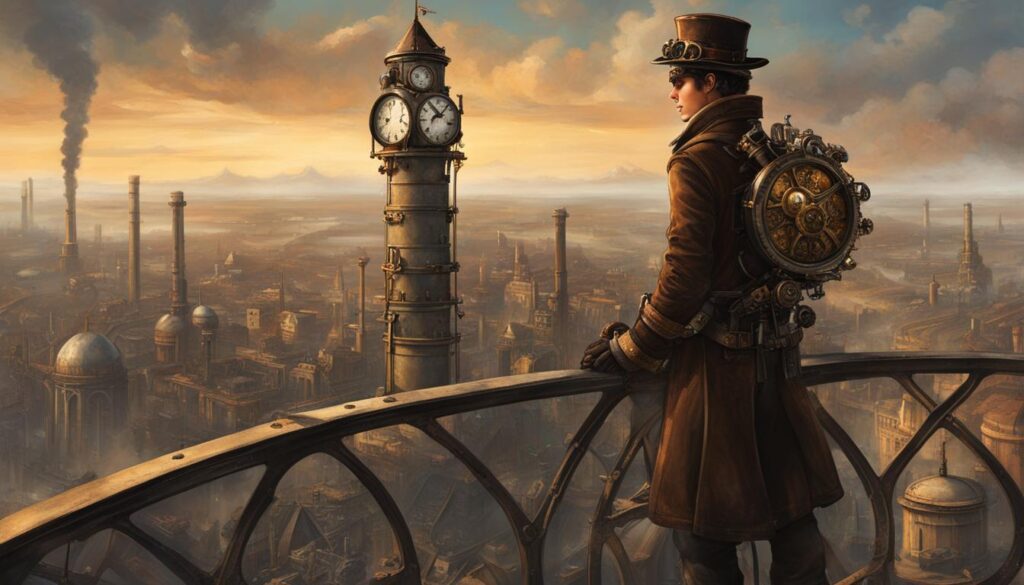
“Steampunk is about reimagining the past to create a better future. It’s a rejection of the present and a celebration of what could have been.” – Unknown
In embracing Victorian ideals and aesthetics, Steampunk offers a counterpoint to the impersonal and homogenized nature of modern society. It celebrates values such as honor, beauty, and a connection with the environment. By combining history, imagination, and a drive for change, Steampunk weaves a tapestry that resonates with those seeking an alternative path and a rekindling of the human spirit.
Conclusion
Steampunk is not just a genre; it is a philosophy, a way of looking at the world through a different lens. By blending history with futuristic ideas, Steampunk creates a unique moral stance that challenges societal norms and celebrates rebellion, innovation, and social reform. It is a philosophy that invites individuals to question the status quo and embrace their own ingenuity and creativity.
Understanding Steampunk’s moral stance requires delving into its core beliefs and the themes it explores. From the fusion of past and future to the rejection of consumerist culture, Steampunk challenges conventional views and offers a different perspective on beauty, honor, and the environment. It is a philosophy that calls for a reevaluation of our values and a rediscovery of the timeless ideals that transcend time and technology.
Through research, worldbuilding, and storytelling, Steampunk invites readers and writers to embark on a journey that goes beyond mere entertainment. It encourages exploration of historical depths, technological possibilities, and the boundless creativity of human imagination. Steampunk’s philosophy offers a fresh perspective, a tantalizing blend of mystery, adventure, and philosophical inquiry that resonates with those seeking a deeper connection to the world around them.
FAQ
What is Steampunk?
Steampunk is a subgenre of science fiction that combines the aesthetics of the 19th-century Victorian era with futuristic ideas, creating a unique blend of history and imagination.
What are the key themes in Steampunk?
Steampunk explores themes of rebellion, innovation, and social reform, often challenging societal norms and reflecting on enduring human values.
Can you recommend any notable works in the Steampunk genre?
Some notable works in the Steampunk genre include “The Difference Engine” by William Gibson and Bruce Sterling, “Mortal Engines” by Philip Reeve, “Boneshaker” by Cherie Priest, “Perdido Street Station” by China Miéville, and “Airborn” by Kenneth Oppel.
How important is research in Steampunk writing?
Research plays a crucial role in crafting an authentic Steampunk story, including understanding the historical context of the Victorian era, the principles of steam technology, and social contexts such as class disparities and gender roles.
What is involved in creating a Steampunk world?
Creating a Steampunk world involves crafting a believable alternative history that combines Victorian-era aesthetics with retrofuturistic technology, often featuring steam-powered machinery, airships, and mechanical automatons.
What is the philosophy and spirituality of Steampunk?
Steampunk is more than just an aesthetic or literary subgenre. It is a philosophy and spirituality that challenges consumerist culture and re-examines post-modern values, embracing ideals such as honor, beauty, and concern for the environment.

